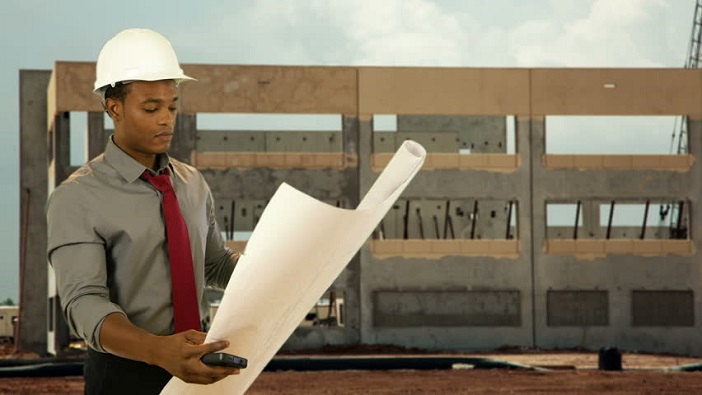Architect-Approved Home Remodeling Ideas
Architect-Approved Home Remodeling Ideas
Blog Article
Comprehending the Diverse Career Paths Available for Aspiring Architect
As a hopeful Architect, you have a globe of job paths waiting for you. Whether you're drawn to standard architecture or the subtleties of lasting design, there's a specific niche that lines up with your passions.
Standard Architecture: Designing Buildings and Structures
Traditional style focuses on developing buildings and structures that blend functionality with aesthetic charm. Your layouts can mirror social heritage, showcasing regional customs while satisfying contemporary requirements.
You'll develop skills in preparing, model-making, and website evaluation, enabling you to imagine and communicate your concepts effectively. Involving with customers, you'll require to comprehend their vision and convert it into viable layouts.
Moreover, developing codes and sustainability methods are important in your work, ensuring your frameworks are ecologically friendly and safe. As you expand in your occupation, you'll discover opportunities in household, industrial, or perhaps reconstruction jobs, each offering special challenges. Accepting typical design paves the means for a satisfying occupation that pays homage to the past while forming the future.
Urban Planning: Forming Neighborhoods and Public Spaces
As a hopeful Architect, you can play a vital role as a metropolitan planner, transforming how neighborhoods communicate and work. By employing neighborhood engagement methods, you'll guarantee that homeowners have a voice in shaping their setting. Plus, incorporating lasting design principles will certainly aid develop rooms that not only fulfill today's needs yet additionally secure the future.
Duty of Urban Planners
While lots of could consider designers as the sole enthusiasts behind structures, city planners play a crucial function fit the broader landscape of communities and public areas. They examine land usage, zoning laws, and neighborhood requires to develop lasting settings that enhance high quality of life. By teaming up with numerous stakeholders, you'll help create parks, transport systems, and suburbs that promote social interaction and accessibility. Urban planners also concentrate on environmental considerations, making sure that growths integrate green spaces and assistance biodiversity. Your proficiency in spatial style and neighborhood dynamics enables you to picture future development while maintaining social heritage. In this essential function, you'll straight affect just how individuals experience their environments, making every job a possibility for favorable adjustment.
Neighborhood Interaction Strategies
Reliable area involvement strategies are important for urban organizers to guarantee that the voices of residents are heard and valued in the preparation procedure. To foster significant discussion, you must prioritize open online forums and workshops where community members can share their ideas and worries. By actively incorporating and paying attention feedback, you'll develop spaces that show the community's demands, ultimately leading to more lasting and effective city settings.
Sustainable Layout Concepts
When creating urban areas, including sustainable style principles is important for creating settings that grow both environmentally and socially. Think about integrating environment-friendly rooms, like parks and gardens, to enhance biodiversity and boost air top quality.
Creating with water preservation in mind is also crucial-- believe about rain yards and absorptive surfaces to take care of stormwater. Including community members throughout the planning procedure guarantees that the areas you create fulfill their requirements and motivate social communication. By embracing these concepts, you'll add to vibrant, lasting metropolitan landscapes that profit everybody.

Landscape Style: Developing Lasting Outside Settings
As you discover landscape architecture, you'll uncover necessary design principles that create attractive and functional exterior rooms. Lasting techniques play a vital role in making certain these atmospheres flourish while minimizing environmental influence. Plus, you'll discover a variety of job possibilities that permit you to make a genuine distinction in how individuals connect with nature.
Style Principles in Landscape
Recognizing layout concepts in landscape design is important for developing sustainable outdoor settings that harmonize with nature. You'll need to ponder elements like proportion, balance, and scale to guarantee your designs feel cohesive and welcoming. Integrating indigenous plants not only boosts biodiversity but also minimizes water use, making your landscape resistant. Consider the flow of space and exactly how people communicate with it; pathways and seating locations must invite expedition and relaxation. Furthermore, take note of seasonal modifications, making with products that match the environments year-round (Architect). By focusing on sustainability and appearances, you can create outdoor areas that enhance the neighborhood and advertise health. Welcoming these principles will establish a solid structure for your career in landscape style.
Sustainable Practices Introduction
Lasting practices in landscape architecture not just concentrate on visual appeals however additionally prioritize eco-friendly health and source conservation. You can design spaces that advertise dirt health, such as making use of organic materials and exercising permaculture concepts. Eventually, these techniques ensure your styles benefit both people and the atmosphere for years to come.
Career Opportunities Expedition
With a solid foundation in sustainable methods, landscape architecture provides a range of profession courses that allow you to make a significant influence on useful site the atmosphere. You can work as a landscape developer, developing aesthetically pleasing and functional exterior spaces, or specialize in environmental repair, aiding to revitalize damaged communities. Urban organizers often collaborate with landscape designers to create green rooms in metropolitan settings, enhancing city livability. If you're passionate about education and learning, take into consideration ending up being a landscape style teacher, motivating future generations. Furthermore, you could deal with nonprofits focused on ecological sustainability or take part in research to introduce new practices. Each path not just forms lovely atmospheres however likewise fosters a much healthier world for future generations.
Lasting Layout: Focusing on Eco-Friendly Practices
As you explore your occupation in architecture, accepting environment-friendly techniques can set you apart in an affordable field. Sustainable style concentrates on developing buildings that decrease environmental effect while improving resident wellness. By integrating renewable products, energy-efficient systems, and sustainable building methods, you'll add to a greener future.
Beginning by acquiring knowledge of eco-friendly accreditations like LEED or BREEAM, which can strengthen your credentials. Think about how natural light, ventilation, and thermal efficiency can enhance design. Collaborate with designers and environmental professionals to introduce options that decrease waste and preserve resources.
Don't forget the importance of community involvement-- interesting regional stakeholders can influence designs that integrate with the atmosphere. As customers significantly focus on sustainability, your competence in environmentally friendly practices will not just bring in jobs yet likewise fulfill your passion for accountable style. Welcome this essential facet of the occupation, and view your profession flourish.
Historical Conservation: Protecting and Restoring Cultural Heritage
While you commence on your architectural trip, think about the necessary function of historical conservation in maintaining our social heritage. This field concentrates on the security and repair of significant buildings, websites, and frameworks that inform the tales of our past. By involving in historic preservation, you'll aid safeguard the architectural legacy that forms area identity.
As a historic conservation Architect, you'll analyze historic importance and assess the problem of frameworks. You'll work very closely with preservationists and historians to guarantee genuine remediation strategies are used. This profession course enables you to blend creativity with research study, enabling you to design services that appreciate original products and workmanship.
Your work not just adds to sustainability by recycling existing buildings but also promotes a sense of pride within areas. Accepting this course will assist you become a guardian of history, maintaining the stories and visual appeals that improve our lives.
Inside Design: Enhancing Indoor Spaces
Historical preservation and indoor style both share a commitment to improving the built atmosphere, yet they focus on different elements. While historical preservation stresses keeping a structure's cultural and historic value, indoor style zeroes in on optimizing interior spaces for functionality and looks.
As an aspiring Architect, you'll find that indoor style read the article allows you to blend imagination with technological abilities. You'll create rooms that not just look excellent but also promote convenience and performance. This field involves comprehending exactly how light, shade, and products interact within a space, affecting mood and usability.
You'll work with various jobs, from household homes to industrial offices, making sure that each setting meets the needs of its occupants. By prioritizing individual experience, you can change insides into motivating and functional rooms, making a substantial effect on how people connect with their environments. Accept the chance to improve indoor atmospheres and shape the way individuals live and function.
Industrial Style: Merging Capability With Aesthetics
Commercial layout plays an essential duty browse this site in developing products that seamlessly mix appearances with functionality, making certain that what you make use of everyday is not just visually attractive but additionally functional. As an aspiring Architect, you can engage yourself in this area, concentrating on making whatever from furniture to consumer electronic devices. Your work entails comprehending user demands, materials, and manufacturing procedures, allowing you to develop innovative remedies that improve everyday experiences.
In commercial design, you'll frequently team up with suppliers, marketing professionals, and engineers, making sure that your layouts are not only attractive but likewise practical. You'll find out to balance kind and feature, focusing on functionality without compromising design. By honing your skills in mapping out, 3D modeling, and prototyping, you'll be well-appointed to bring your ideas to life. This occupation course offers a dynamic atmosphere where creative thinking satisfies practicality, making it a fulfilling choice for architects interested in shaping the items of tomorrow.
Frequently Asked Questions
What Educational Qualifications Do I Need to End Up Being an Engineer?
To come to be an architect, you'll need a professional degree in style, typically a Bachelor's or Master's. In addition, you'll need to complete an internship and pass the Architect Enrollment Exam to practice legally.
Exist Accreditation Needs for Various Building Occupation Paths?
Yes, there're qualification requirements for various architectural paths. Architect. You'll require to pass examinations, total teaching fellowships, and in some cases pursue specialized training, depending upon your picked emphasis, like landscape design, metropolitan layout, or historic preservation
What Software Skills Are Essential for Architects Today?

Just How Can I Gain Practical Experience While Examining Architecture?
You can gain sensible experience by interning at building firms, joining layout competitions, offering for neighborhood projects, or teaming up with schoolmates on real-world assignments. These possibilities improve your abilities and develop valuable connections in the market.
What Task Opportunities Exist Outdoors Typical Architecture Firms?
You can explore various work chances outside typical architecture companies, like city planning, interior decoration, landscape architecture, building and construction administration, realty development, and even duties in sustainability consulting. Each deals unique difficulties and incentives.
Whether you're drawn to typical architecture or the subtleties of sustainable layout, there's a particular niche that lines up with your passions.When designing metropolitan rooms, integrating lasting layout principles is vital for creating environments that prosper both environmentally and socially.As you explore landscape design, you'll find crucial design principles that produce beautiful and practical exterior spaces.Understanding design concepts in landscape style is essential for creating sustainable outdoor environments that balance with nature.In commercial layout, you'll usually team up with makers, marketing professionals, and engineers, making sure that your layouts are not just beautiful but additionally viable.
Report this page